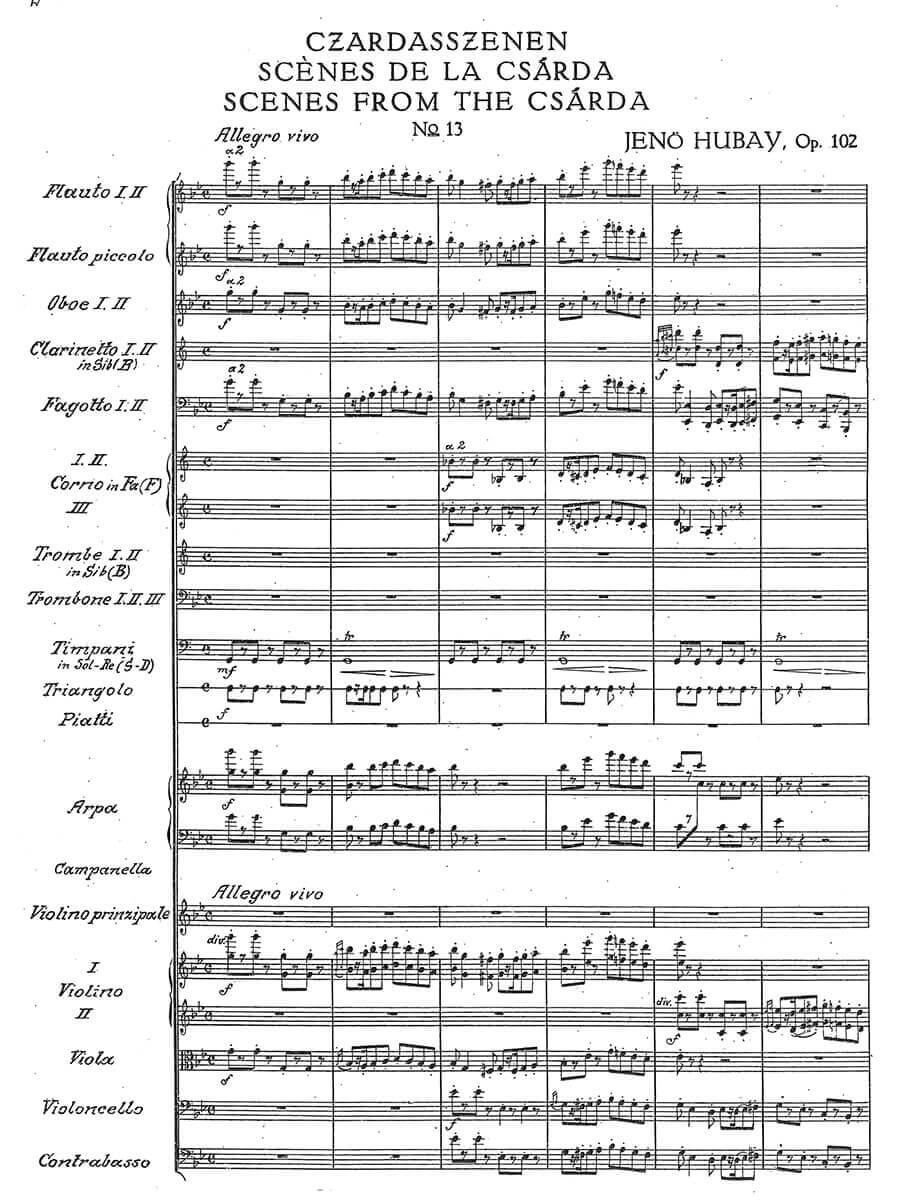Czárdás-Szenen Op. 102
Hubay, Jenö
19,00 €
Preface
Jenő Hubay
(b. Pest, 15. September 1858 – d. Budapest, 12. March 1937)
Czardasszenen op.102
Tavern scene N. 13
Inter arma violino canit
The Hungarian violinist Jenő Hubay (born in 1858 and deceased in 1937), who was known all over the world, played a mediatory role all his life. He could make a bridge between the opposing Romanticists, being a partner in chamber music both to Franz Liszt and Johannes Brahms.12 He could easily do so, his father being a close friend both of Liszt and the mentor of Brahms, Josef Joachim. Hubay held on to his conciliatory position: he conducted the pieces by Wagner and Debussy with the same enthusiasm.
Being noticed for his talent early, he studied in Berlin, and later, following the advice of Liszt, he went to Paris to perfectionate his skills. First, he came to be a disciple of Henryk Wieniawski, then of Henri Vieuxtemps, who made him an heir of his oeuvre. In Brussel, he came to be appointed as a teacher of violin, a position he only left for the same status at the Academy of Music in Budapest in 1885. He taught till the end of his life, and for 15 years, he was also the director of the Institute (1920-1935). The Hungarian Violin School – known all over the world – was formed as a result of his teaching activity, where he always let the individual character of his disciples develop freely. The most outstanding among them were Stefi Geyer, Erna Rubinstein, Wanda Luzzato, Ferenc Vecsey, Ede Telmányi, József Szigeti and Jenő Ormándy. Besides his didactic work, he was constantly performing, especially with the string quartet “Hubay-Popper” founded by himself and starring David Popper as a permanent member.
Hubay started composing already at a tender age. First, he mainly composed chamber and solo pieces for his own instrument, but later, he began writing pieces for larger orchestras, e.g. he produced four significant violin concertos, and one for viola. Out of his nine operas, The Violinist of Cremona and Anna Karenina brought him worldwide recognition, the first being performed in both America and South-Eastern Asia. At the same time, The Mask – with its powerful language – and The Venus of Milo would also be worthy of international attention. His two symphonies are large-scale works; however, these are not of an imperishable quality; but his three cantatas: The Symphony of Dante (1921), The Symphony of Petőfi (1922) and the Ara Pacis (1922) are perennial. The first two of these oratories composed for orchestra, mixed choir and soloists, relying on the lyrics provided by the poetic works of Sándor Petőfi, Dante Alighieri and Romain Roland were taken abroad by conductors after the premiere, and were also broadcast in European radio channels. Hubay began composing Ara Pacis during WWI, but finished it only during WWII – yet, due to political reasons, it was only presented in Budapest in 2000 – with great success.
Hubay considered the oeuvre of Liszt as the basic register of composing, but he confidently turned to the style hongrois, the musical dramas of Wagner, and musical pieces by Massenet, Debussy and Puccini for inspiration, as well. He never sought to be modern or a pioneer; instead, he synthetized contemporary styles and his own instrumental experience, and hence his uniqueness.
Read full preface > HERE
Score Data
| Edition | Repertoire Explorer |
|---|---|
| Genre | Orchestra |
| Size | 210 x 297 mm |
| Printing | Reprint |
| Pages | 56 |
